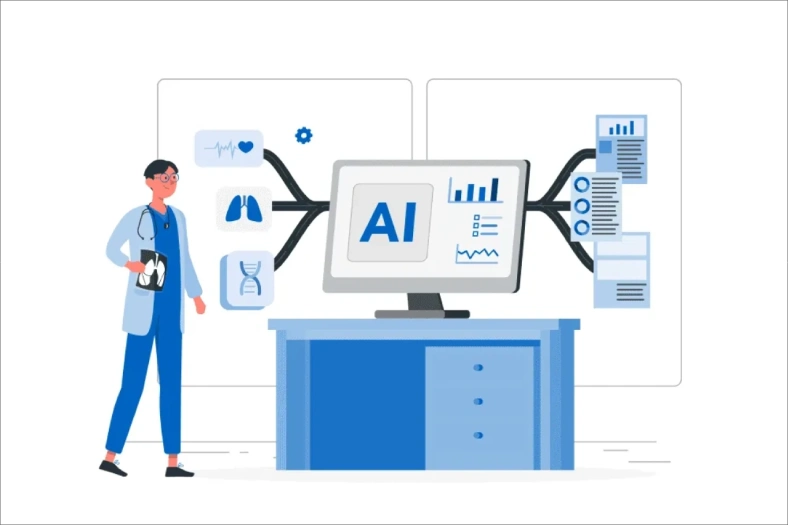The integration of Artificial Intelligence (AI) into healthcare systems is heralded as a revolutionary step towards enhancing patient care, optimizing treatment pathways, and improving overall health outcomes. However, the successful implementation of AI algorithms within these complex ecosystems requires much more than just sophisticated coding. It demands a holistic approach that considers data availability, infrastructure readiness, interface usability, end-user engagement, clinical context, and continuous monitoring.
Data Accessibility and Quality
The foundation of any AI algorithm’s success in healthcare hinges on the availability of high-quality data. Are the data needed for the algorithm readily available and in an extractable format? Can the algorithm be fueled by accurate and up-to-date information, a crucial step for generating reliable predictions. One approach may be routine extraction of clinical information, such as laboratory results and vital signs, in real-time using FHIR standards.
Infrastructure: The Backbone of AI Implementation
For AI algorithms to function seamlessly within healthcare settings, robust infrastructure capable of real-time data extraction and analysis is paramount. Are there adequate infrastructure and computing resources available to host a cloud-based analytics and storage platform (like Amazon Web Service)? Such infrastructure not only supports the operational demands of AI but also lays the groundwork for scalability across the healthcare system.
Interface Design: Bridging AI and Clinical Practice
The interface through which AI predictions are communicated to the clinical team is critical for ensuring these insights lead to actionable interventions. How will the clinical team be made aware of these predictions (i.e., is a custom dashboard integrated into the electronic health record required)? Predictions can be integrated into an EMR flowsheet via an HL7v2 outbound message. A Best Practice Advisory can be triggered for patients at high risk of developing sepsis, for example.
How can the clinical team understand how the algorithm made this prediction (i.e., model explainability)? Can you provide a relevance score for each feature, which measures the gradient of the risk score with respect to all input features multiplied by the input features. The features with the highest positive relevance scores should be displayed in the flowsheet.
Engaging End-Users in the AI Journey
The success of AI in healthcare is also determined by its acceptance and utilization by clinical staff.
- Which clinical team member(s) are most appropriate to receive the risk prediction? Perhaps nurses as they care for a specific roster of patients and frequently open their patients’ charts.
- What is their level of trust in the AI algorithm? Was a multidisciplinary team created to guide implementation. Where nurses surveyed to identify their needs. Did you provide regular feedback to nurses during the implementation phase.?
- What is the risk of alert fatigue, burnout, or a decrease in algorithmic compliance over time? What is the non-compliance rate throughout the implementation period.
Clinical Context and Actionability
For AI to be truly impactful, its predictions must be actionable within the clinical context:
Can a standardized action plan be implemented based on the risk prediction? In the case of sepsis prediction it could perhaps be : (1) indicating no suspicion of infection, (2) confirming ongoing sepsis treatment or workup, or (3) notifying the physician.
Are there sufficient hospital resources (e.g., inpatient beds, operating room staff, or specific interventions) available for the clinical team to act on the risk prediction? Can the clinical team initiate antibiotics and fluids or order additional investigations?
Monitoring and Maintenance: Ensuring Long-term Viability
The dynamic nature of healthcare environments means that AI systems must be continuously monitored and updated to maintain their accuracy and relevance.
How will clinical end-users or hospital leadership know whether the model continues to perform well over time? Are you measuring sensitivity and positive predictive value regularly.
What happens if the algorithm’s performance degrades over time (i.e., is there adequate infrastructure and expertise to retrain the algorithm)? Do you have a system to trigger retraining if its performance fell below pre-specified thresholds.
What happens if the compliance of clinical end-users degrades over time? Do you have a continuous education program in place to optimize human-AI collaboration.
Conclusion
The integration of AI into healthcare is a complex, multifaceted endeavor that extends well beyond the development of algorithms. The successful implementation of such technologies requires careful consideration of data quality, infrastructure capabilities, user interfaces, end-user engagement, clinical applicability, and ongoing monitoring. By addressing these critical success factors, healthcare systems can unlock the full potential of AI to revolutionize patient care, enhancing both the efficiency and effectiveness of medical interventions. This guide serves as a beacon for future endeavors, illustrating the path to achieving harmonious integration of AI into the intricate world of healthcare.



0 Comments